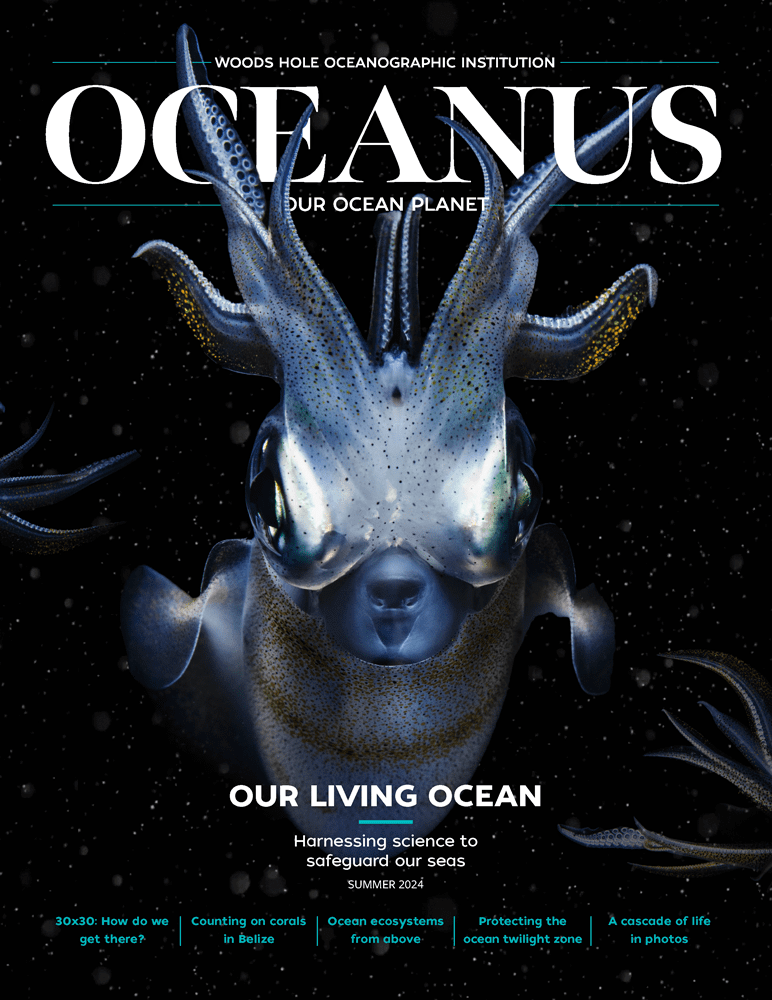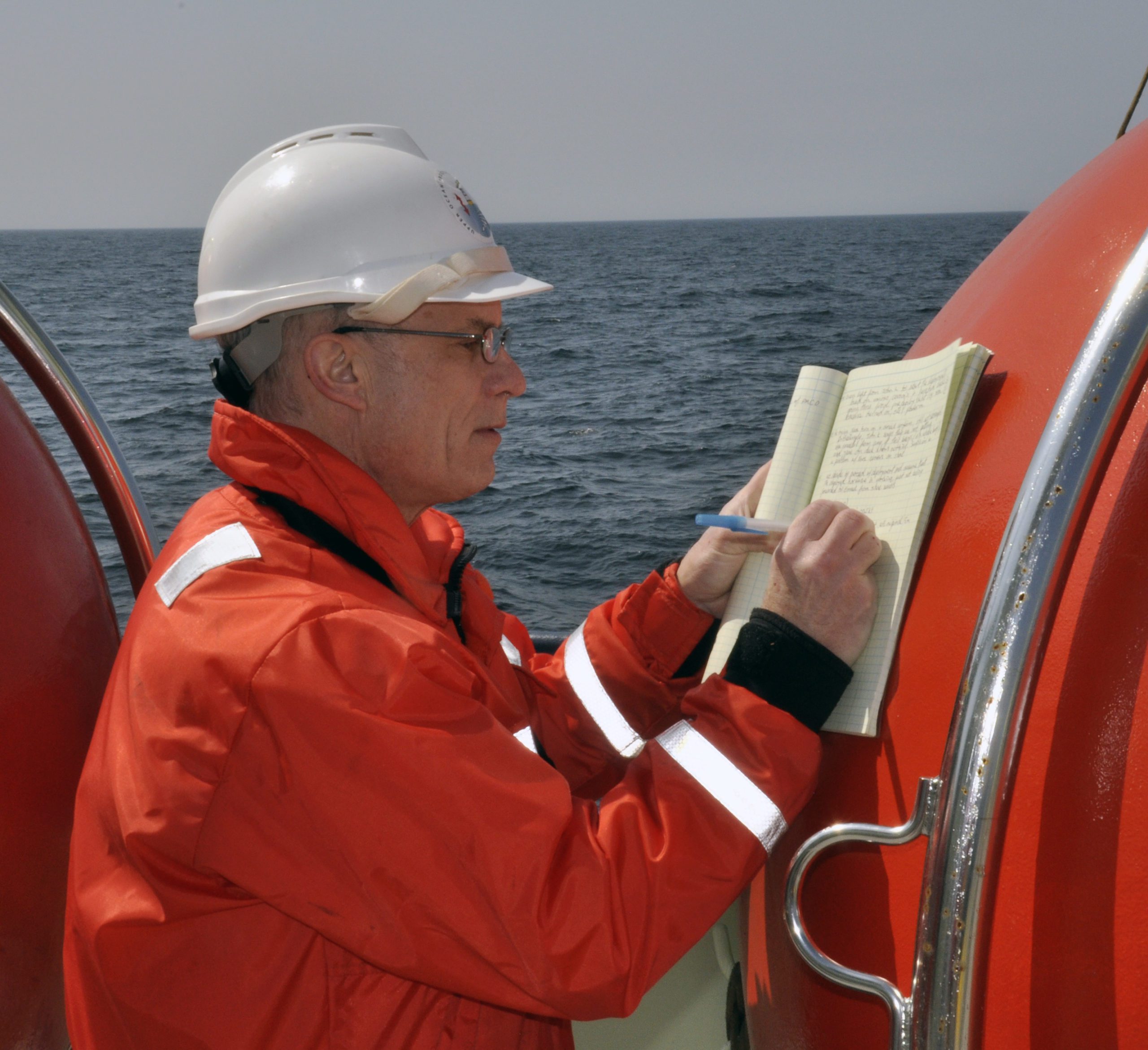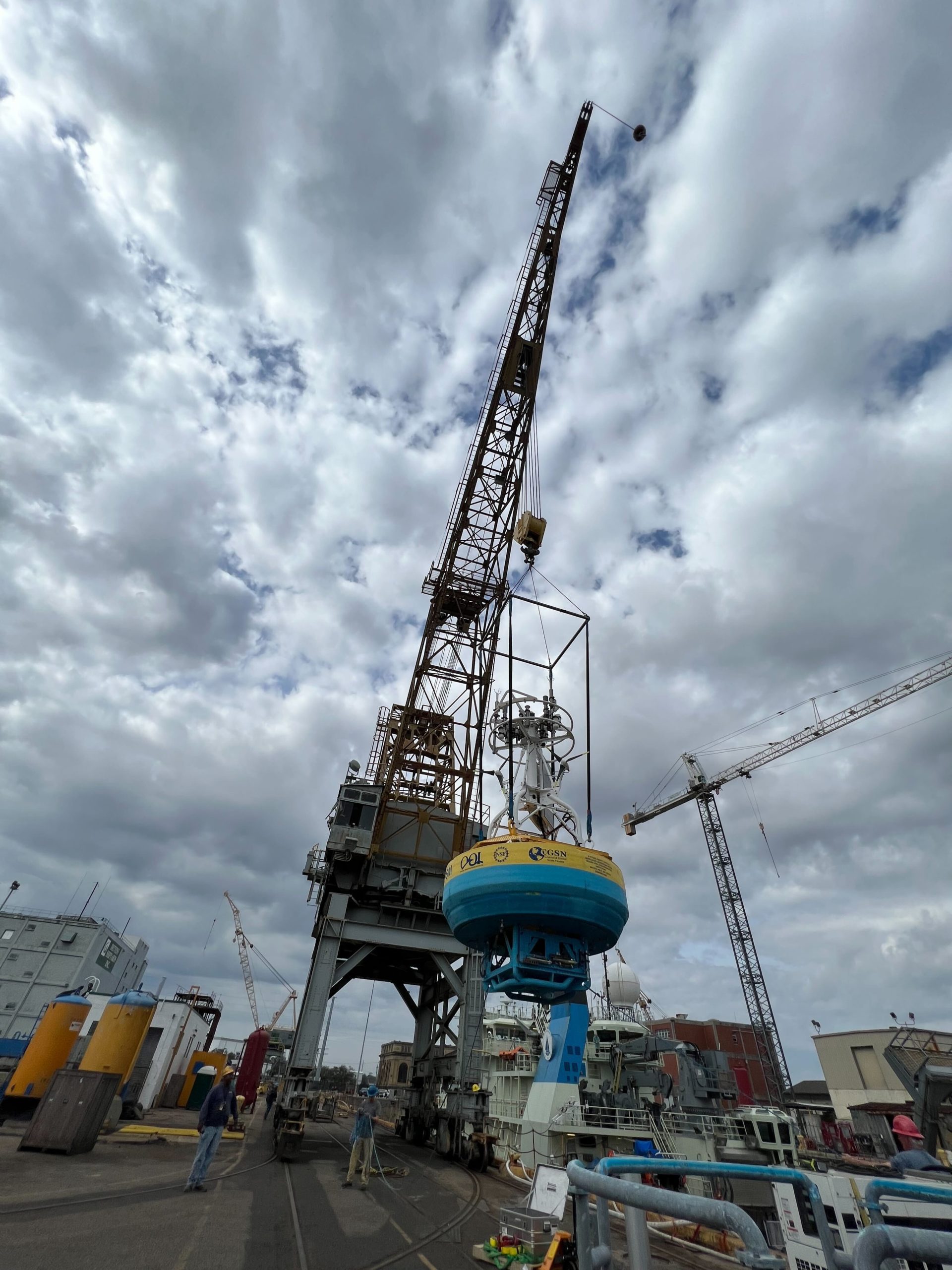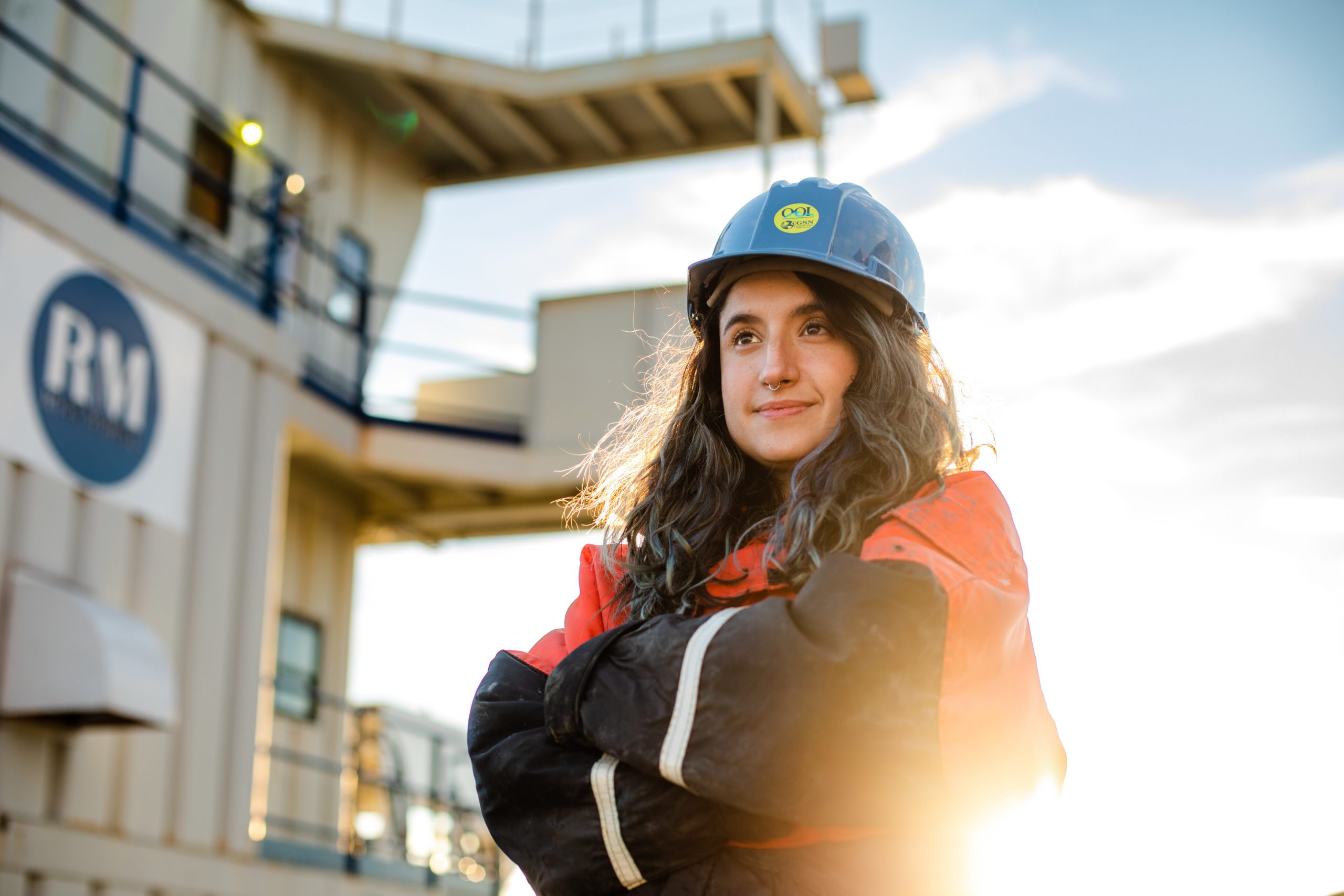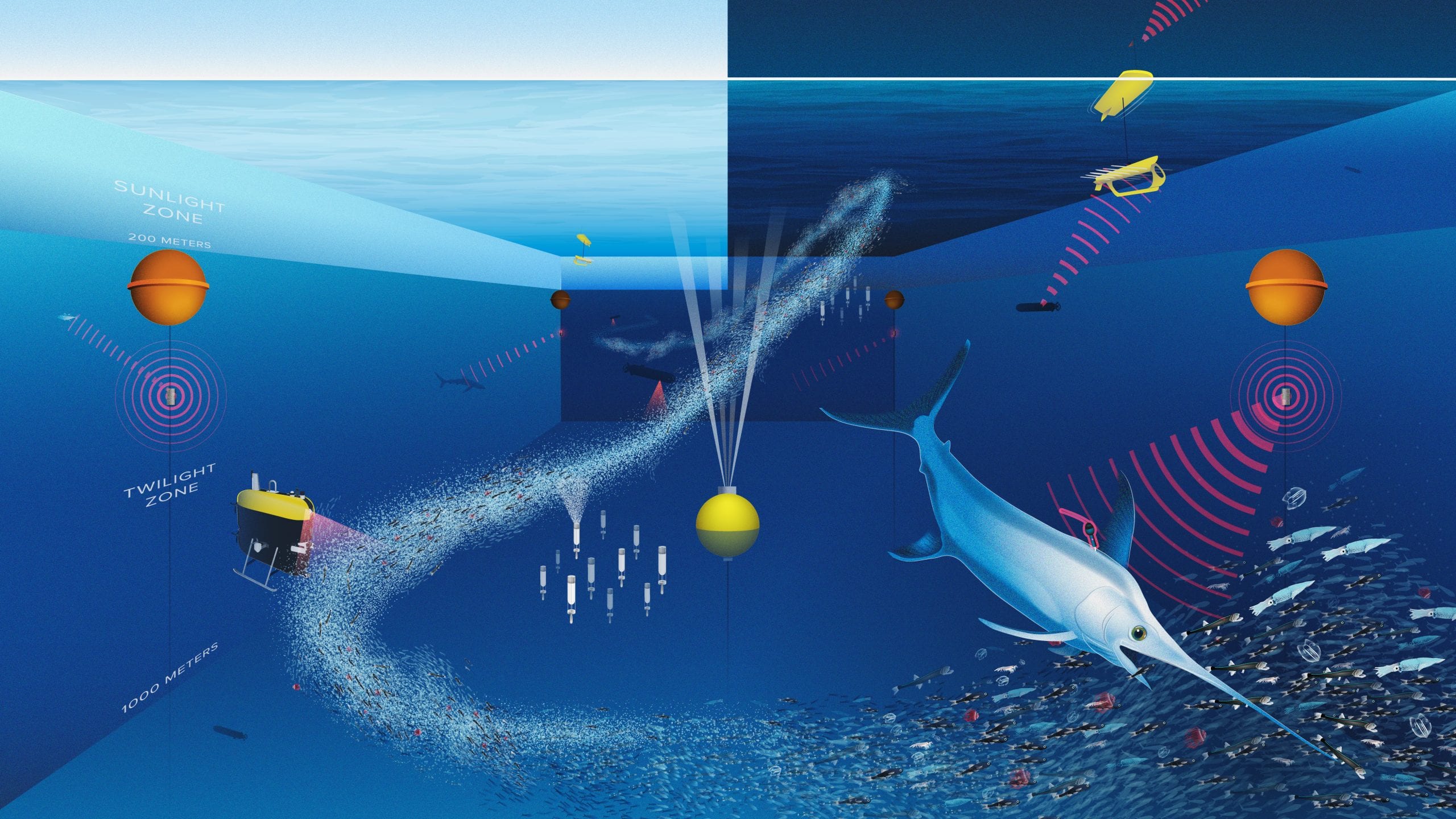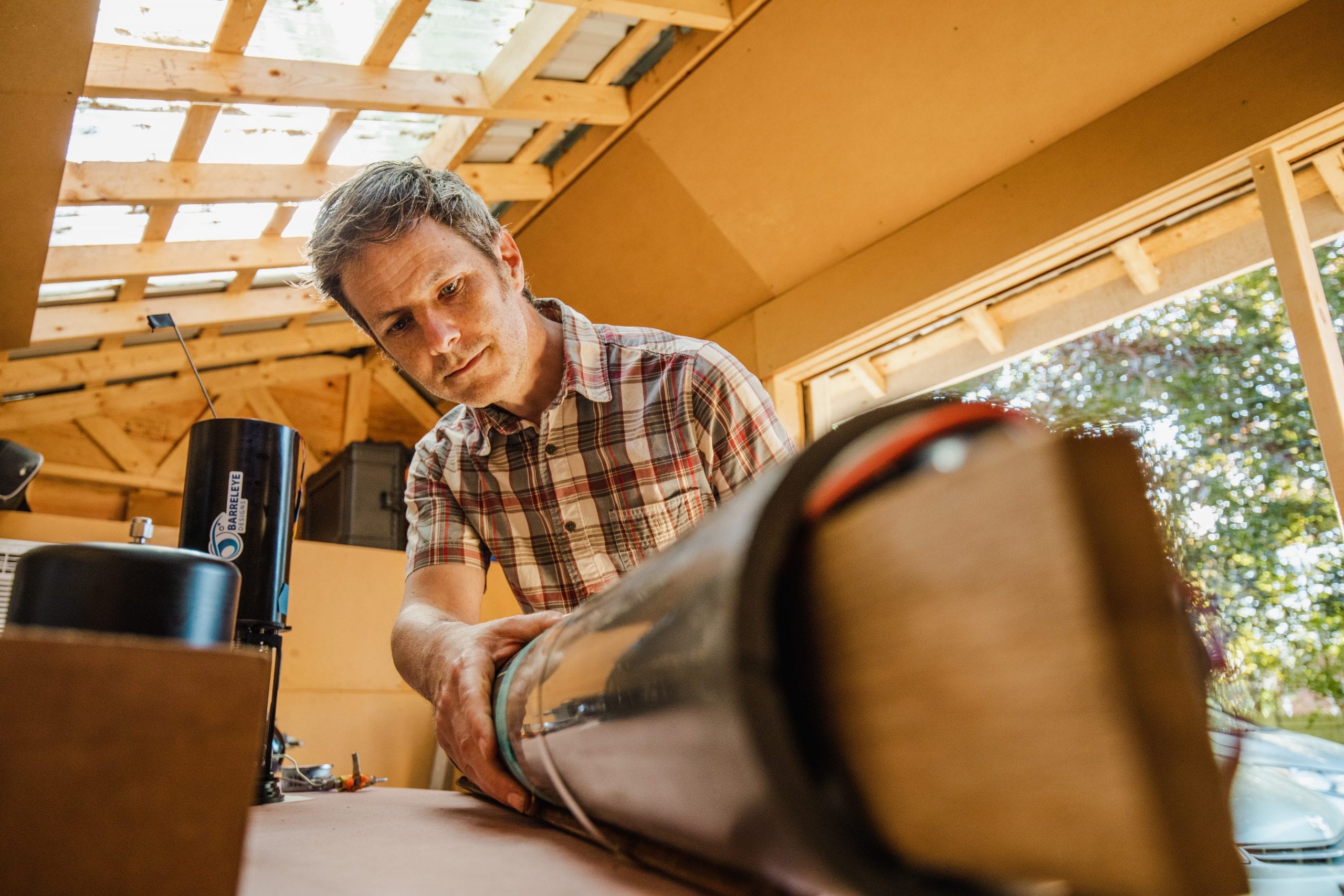On the Move
The Coastal Pioneer Array is moving south in 2024. WHOI’s Al Plueddemann discusses the array’s importance and its upcoming move
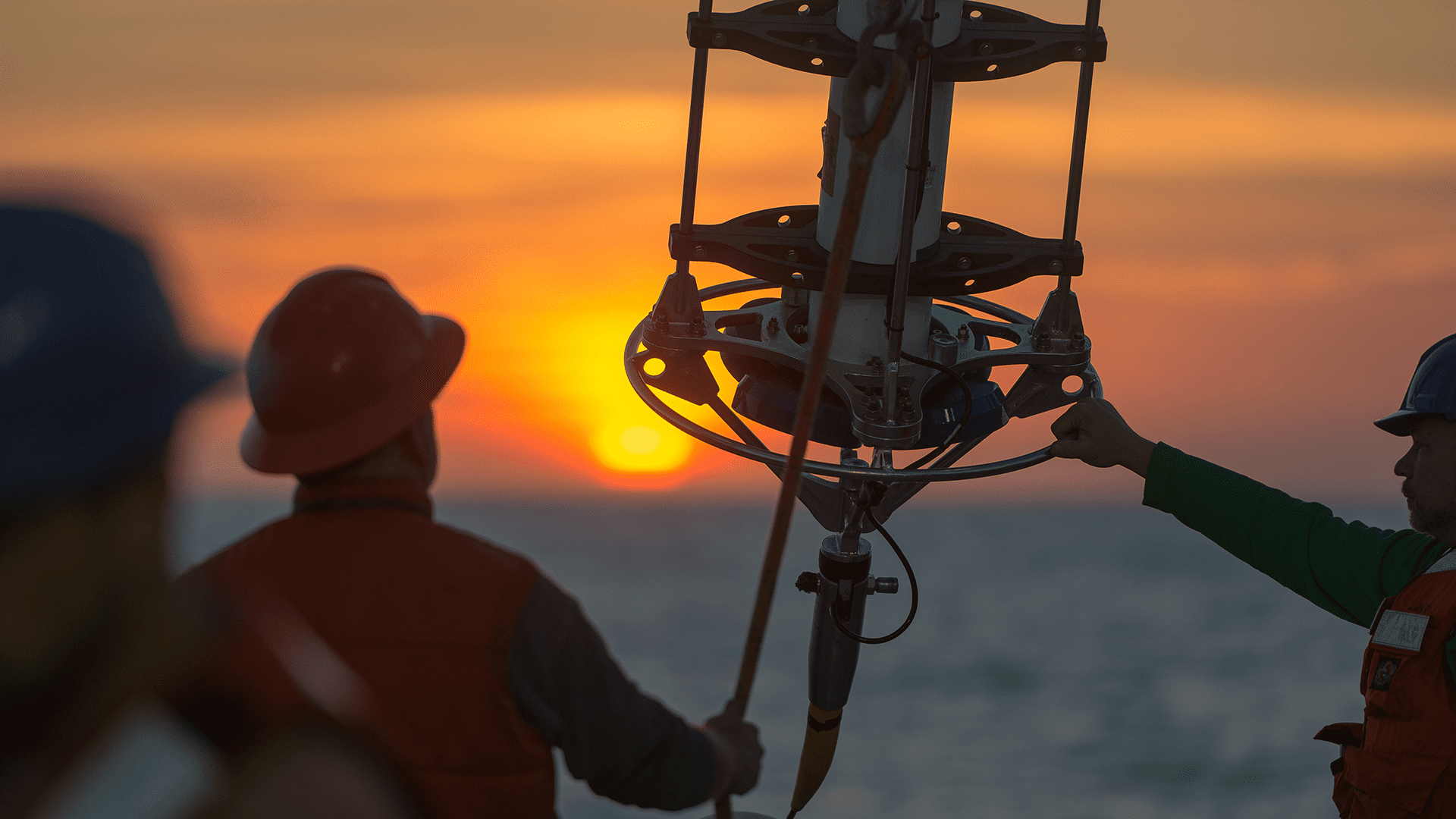
By Randy Showstack | MARCH 9, 2023
The Coastal Pioneer Array is one of five arrays that comprise the Ocean Observatories Initiative, a National Science Foundation (NSF)-funded observing system collecting data from more than 900 instruments—including multiple ocean robots at each array—to address questions about the ocean. Since 2016, the Pioneer Array has operated on the New England Shelf, about 75 nautical miles south of Martha's Vineyard, Massachusetts.
However, the array was envisioned and designed to be relocatable, in order to investigate important science questions and gather data from different coastal regions. Following the recommendation from an NSF-sponsored community workshop held in 2021, the array will be relocated to the Southern Mid-Atlantic Bight (MAB) in the spring of 2024 to gather data on cross-disciplinary science topics including the exchange of ocean properties such as heat, salt, and nutrients between the continental shelf and the deeper ocean offshore; biogeochemical cycling and transport in the coastal ocean; and extreme events such as hurricanes, winter storms, and freshwater outflows.
Oceanus spoke with Plueddemann, a senior scientist in the Woods Hole Oceanographic Institution (WHOI)’s Physical Oceanography Department, about the array and what it will study in the new location. WHOI houses OOI’s program management office and the Coastal and Global Scale Nodes (CGSN) portion of OOI. Plueddemann is the project scientist for CGSN, which includes the Pioneer Array.
What has been special about the Pioneer Array?
The array has focused on sustained observations at appropriate space and time scales, using instrumented moorings and robotic vehicles such as buoyancy-driven gliders and propeller-driven autonomous vehicles, to capture important processes on the continental shelf and slope. The array’s original location off the coast of New England was chosen with the expectation that it would be in a region with a single dominant process that controlled the exchange of properties across a persistent ocean front. Conditions didn’t turn out to be that simple. For instance, there turned out to be strong influences from Gulf Stream eddies. However, you could say the plan worked, in that most of the key results so far are related to property exchange across the frontal system.
Explain more about why the Pioneer Array is moving.
The Pioneer Array is unique within the Ocean Observatories Initiative in that there was a desire to have elements of the OOI that were not fixed in place, but could be moved from one location to another to explore new areas. In order to execute the planned move of the Pioneer Array, NSF convened a series of workshops involving researchers and other coastal ocean stakeholders from across the U.S. Several options for a new location were explored, including the coasts of Alaska, Hawaii, and Puerto Rico. Ultimately, the workshop recommendation was to relocate to the coast of North Carolina, a complex and intriguing region where many important processes could be studied.
Are you wistful about the move?
It's the classic bittersweet sentiment. The array in its original incarnation was very successful. So, being researchers, you say, ‘We have got to keep doing this. We want to move further into interdisciplinary research. We need to keep the array right where it is, forever.’ But the silver lining, and the reason the array’s move is sweet and not just bitter, is that there is a great opportunity to do amazing research with the array in a different location.
What is different about the new location?
The daunting part about the new location is that it’s really complicated. It’s like every coastal process we can imagine is happening there. It’s going to be an enormous challenge scientifically to understand it. To help with this challenge, we are planning to make several new measurements for Pioneer Array MAB including surface currents, suspended particulates, turbidity, and phytoplankton imaging.
How did you get involved?
My career has been largely built on recognizing the power of connecting science to engineering, and the OOI and the Pioneer Array have been a chance to do that in a big way. I was always fascinated by instruments and mechanical devices, and my undergraduate entering major was engineering. When I was a kid growing up in New Jersey, for instance, I rebuilt my Schwinn 10 speed bicycle after tearing it apart to a bare frame in my garage. I got fascinated by ocean science as a senior in college when I took an elective class in oceanography, probably because it occurred at a convenient time of day. During the first few lectures, the professor was saying we’ve barely scratched the surface of this really complex, interlaced, physical, biological, and chemical environment that is the ocean. To me, that sounded pretty interesting, and I gradually transitioned from just engineering into more science and ocean research.
Why are the OOI and the Pioneer Array important to the public?
Ultimately the present and future health of our coastal ecosystem is what we are trying to understand with these studies. Every coastal state has a stake in their coastal ocean. There is a high degree of species diversity on the continental shelves, as well as other relevant issues, whether it’s fisheries, windfarms or carbon storage due to air-sea interactions. We need to think of the coastal ocean as a complex ecosystem proximate to where people live that is critical for our overall health and well-being in ways that we probably don’t realize on a daily basis.
